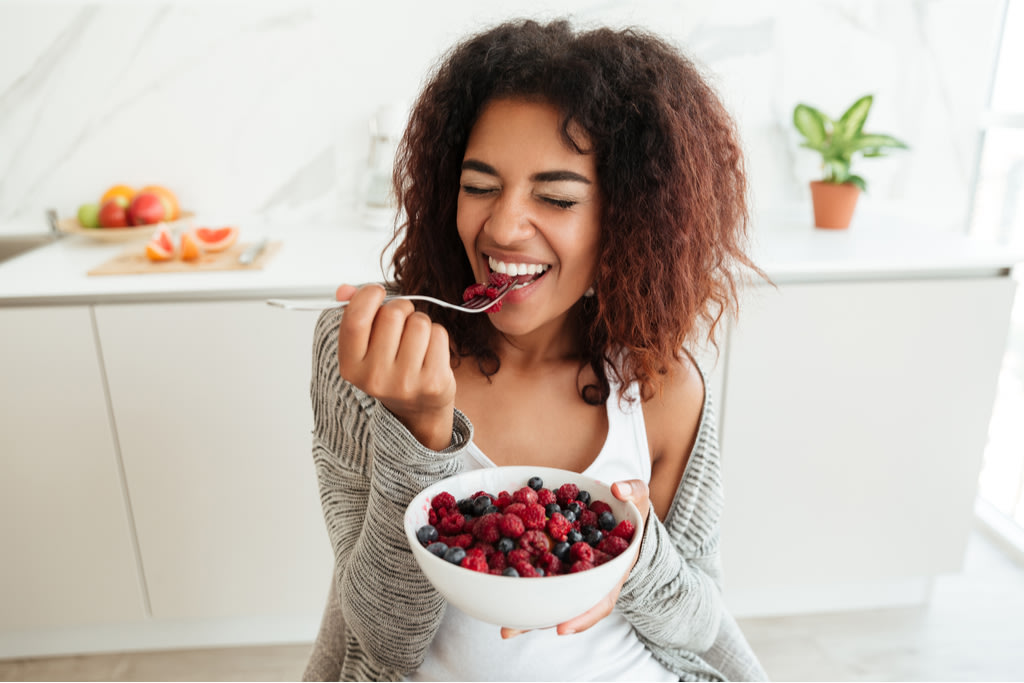Healthy Eating Made Easy

October 15, 2020

Healthy eating can be confusing — and with so many ways to eat healthy at home, how do you begin? While nutrition is individual, figuring out how to eat healthy doesn’t have to be complicated.
Getting your nutrition right can help you maximise the benefits of your workouts. Once you understand the basics, you can start creating healthy eating habits to provide your body with the nutrition it needs.
This overview of what it means to be healthy can help you to get started.
How to eat healthy
It’s important to understand how to use food for fuel — if you can get the balance right, it’ll be easier to maintain a healthy lifestyle and energise your training, work, home life and social life.
To eat healthier, there are three things you should consider:
The types of foods you eat
How much you eat, and
How often you eat.
Variety is key
Eating healthy means including a wide variety of nutritious foods to provide your body with the macronutrients and micronutrients it needs to function properly.
According to the Australian Guide to Healthy Eating, there are five food groups you should aim to include each day:
Vegetables and legumes (beans and lentils)
Fruit
Grains (ideally wholegrains or high fibre varieties)
Lean meats and poultry, fish, eggs, tofu, nuts and seeds and legumes/beans, and
Dairy and alternatives.
Your age, basal metabolic rate and activity levels determine the amounts of each food group you need and these recommendations may differ depending on your country or region.

Balance your plate
Generally speaking, it is recommended that most people aim for 2 serves of fruit, 5 serves of vegetables, 4-6 serves of grains, 2-3 serves of protein and 3-4 serves of dairy each day. The simplest way to measure this is to think about the balance of your plate and portion size.
Ideally, at each meal, half the plate should contain vegetables (put these on the plate first!), one-quarter starch or carbohydrate, and the remaining quarter protein-rich foods.
Hydration matters too
The human body is made up of 50-80% water! Research shows if you’re dehydrated, you’re more likely to experience brain fog and lack energy — and therefore more likely to reach for processed foods when you need a snack.
A 2016 mini-review, by Université de Lorraine in France, looked at studies investigating the link between hydration and weight loss, and found that there is a likely link between increased hydration and weight loss due to lower calorie intake throughout the day, and increased fat burning.
Most women should aim to drink at least 1.5L of fluid each day, but if you’re training or the weather is hot, you will need to drink more. If you struggle to drink enough, try flavouring your water with a fresh squeeze of lemon, carrying around a drink bottle, using a water tracker (there's one in the Sweat app), or set yourself a goal to drink one glass of water between each meal and snack.
Healthy eating means listening to your body
Now that you know more about healthy foods and how much you need, next consider your eating habits — when and how you eat each day.
Use intuitive eating to break through unhealthy habits
Nurturing a healthy relationship with food by eating mindfully and intuitively can make it easier to form healthy eating habits.
Rather than fad-dieting or restrictive eating, listen to your body by tuning in to its natural hunger signalling system — this means eating when you are hungry until you are satisfied and learning not to turn to food for comfort.
A 2016 review by Monash University in Australia found that intuitive eating was associated with a better relationship with food, less fad dieting and a more positive body image in women. In fact, several studies have shown a correlation between intuitive eating and healthy eating, weight loss and positive psychological outcomes.
To be successful with intuitive eating, you may benefit from addressing stressors in your life using tools like exercise and mindfulness — and limiting distractions while you are eating.

Make time to plan ahead
Planning your meals and snacks ahead of time removes the temptation to grab readily available food that is often less nutritious.
Preparing meals for the week, or even a couple of days, can help to ensure that you're getting plenty of variety, and including servings from each of the five food groups.
If you can, set a regular time aside each week to plan, shop and make your meals. Store ready-made meals in your refrigerator and freezer to grab-and-go when you need them and keep healthy snacks — like fresh fruit or nuts — visible, for when you feel hungry.
Enjoy all foods in moderation
Healthy eating is about being realistic. This means allowing some flexibility and balance in your diet to accommodate your lifestyle —it’s perfectly okay to eat less nutritious foods or your favourite dessert, especially if it’s part of a celebration or social occasion.
Living a healthy lifestyle should be enjoyable and sustainable. Eating all types of food is part of a balanced mindset and will help you maintain a positive relationship with food.
You can eat healthy without overhauling your lifestyle
So how do you put all of this together? Simple — find what works for you!
You can start by making small changes towards an overall healthier eating pattern — try drinking more water each day, or adding an extra serve of vegetables to your meals.
Healthy eating looks different for everyone. Understanding the principles of healthy eating can help you develop habits that fit into your lifestyle and you can adapt them over time as your life evolves.

A more empowered you starts with Sweat, and our editorial team is here to bring you the latest fitness tips, trainer recommendations, wellbeing news, nutritional advice, nourishing recipes and free workouts.
* Disclaimer: This blog post is not intended to replace the advice of a medical professional. The above information should not be used to diagnose, treat, or prevent any disease or medical condition. Please consult your doctor before making any changes to your diet, sleep methods, daily activity, or fitness routine. Sweat assumes no responsibility for any personal injury or damage sustained by any recommendations, opinions, or advice given in this article.
Nutrition